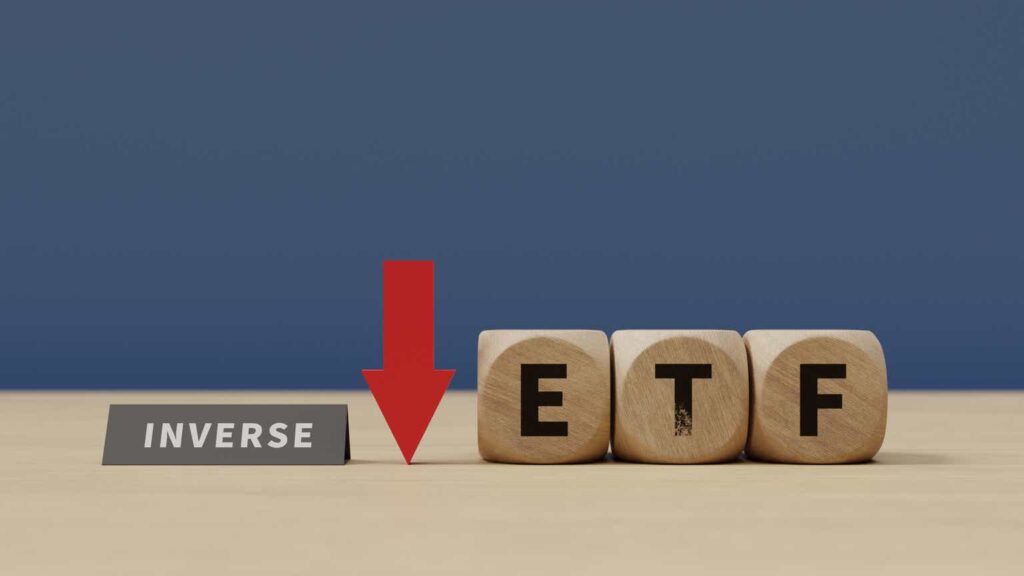At the end of February this year, Roundhill Investments launched a trio of very interesting ETFs: the Roundhill Magnificent Seven ETF (MAGS), the Roundhill Daily 2X Long Magnificent Seven ETF (MAGX), and the Roundhill Daily Inverse Magnificent Seven ETF (NASDAQ:MAGQ). Today’s discussion is going to dive into the last of these, MAGQ, the inverse Mag 7 ETF that aims — on a daily basis — to achieve its objective of a daily -100% (negative 100%) return on the underlying equity assets. In other words, when the Mag 7 stocks go down, this fund seeks to go up by the same measure. However, there’s no direct ownership of Mag 7 stocks; instead, the fund invests in futures contracts and swap agreements to gain exposure to those equities in three different ways: with ETFs containing only Mag 7 stocks, ETFs that have a basket of securities that includes the Mag 7 ETF, or an index of such securities that reflect what a Mag 7 ETF would hold.
The Basics of MAGQ and Why I Think This Strategy Will Work
MAGQ is a tiny fund with assets under management, or AUM, of a little over $600,000. There’s not much liquidity, which is a risk, but as I discuss further down the article, that could change once the overall market starts to look shaky, as I suspect it will over the next six months to a year.
The fund has a reasonable expense ratio of 0.95%, which is actually a little cheaper than many of the leveraged ETFs that I’ve covered on Seeking Alpha. The fund invests primarily in equal-weighted Mag 7 swaps and T-bills, as well as a few other cash-equivalent holdings that are essentially intended to provide the kind of cash liquidity the fund needs to support its strategy.
The strategy itself is a simple, albeit risky one. This is not only because of the daily rebalancing or “reset” that can greatly magnify any volatility in the underlying securities, but also because you’re essentially betting against some of the biggest market movers in the world today. The Mag 7 alone accounts for around 35% of the S&P 500 (SP500), as represented in the holdings of the SPDR® S&P 500 ETF Trust (SPY), and has been responsible for much of the uptrend in this and other broad-market ETFs that are cap-weighted.
Here’s why: the biggest movers, sector wise, have been information technology, communication services, and consumer discretionary. We can see this in the 1Y price appreciation of sector ETFs, particularly The Technology Select Sector SPDR® Fund ETF (XLK) and The Communication Services Select Sector SPDR® ETF Fund; not so much The Consumer Discretionary Select Sector SPDR® Fund ETF (XLY), though, because of its +18% Tesla (TSLA) weighting, has been a drag on the fund over the past year. For context, TSLA is down more than 8% over the past year. As is evident from the graph below, the first two ETFs outperformed the market.
SA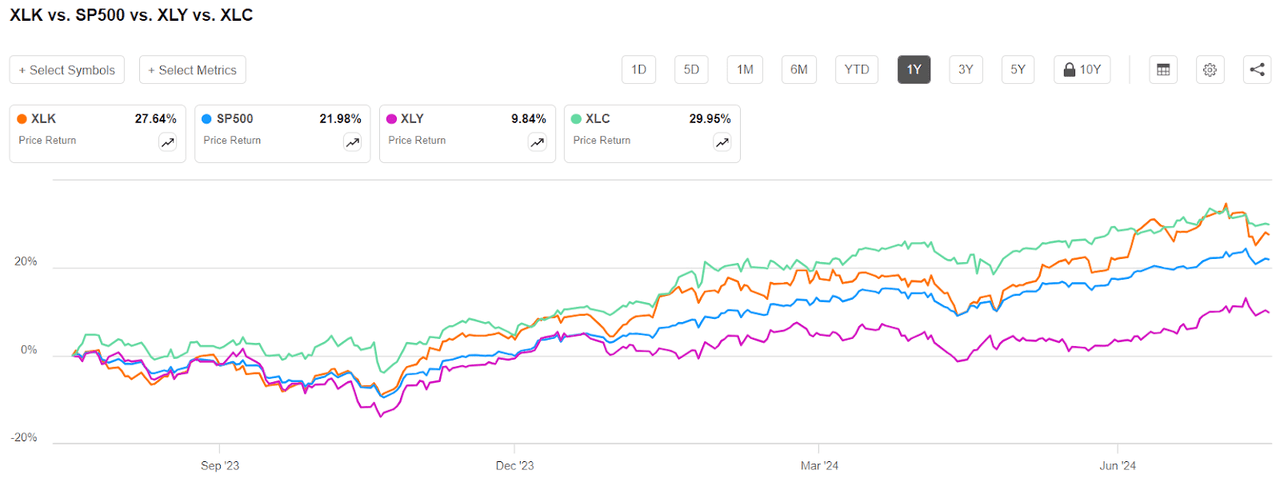
So, with MAGQ, you’re essentially placing a leveraged bet on the Mag 7’s eventual decline below current nosebleed valuation levels. For some perspective, here’s an interesting chart from Clearnomics that shows you how the S&P 500’s valuation metrics have bloated over the past year in terms of standard deviation from the mean.
Clearnomics and Thomson Reuters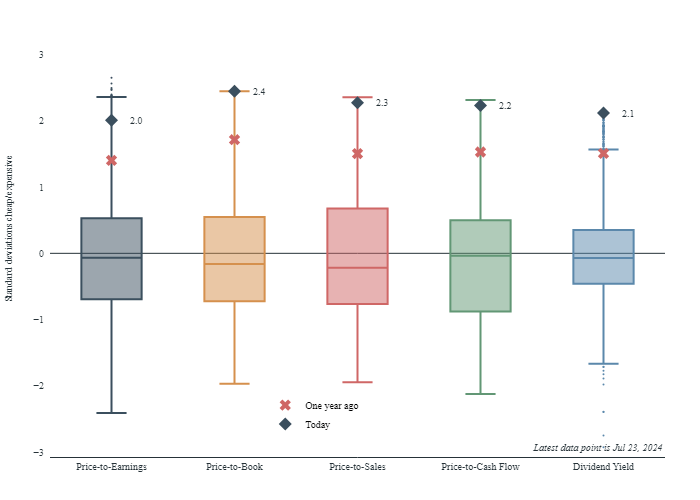
Statistically speaking, this type of distribution — where the standard deviation of every single valuation metric under consideration is at 2 or above — indicates that a “significant portion” of the underlying data points are at extreme levels; extremely high, to be specific. So, what’s a “significant portion”? Could it be 35% — the same concentration of the Mag 7 within SPY? I think it’s reasonable to assume that it is. It doesn’t take a PhD to figure out where those wide dispersions from the mean are coming from — in very large measure, from the current valuations of the Magnificent 7. That’s the premise of this inverse leveraged play on the Mag 7.
How does MAGQ play a part in this strategy? That’s where the inverse leverage comes into play. At some point in the future, and I’m not saying it will happen immediately, those valuations will need to come down to more realistic levels. Currently, I’d bet that it is investor enthusiasm and overall market exuberance, more than the actual stellar performance of these companies, that’s driving the market higher and higher.
That might be a self-sustaining phenomenon in itself, but market participants are as fickle as they are human. One major miss, one weak guidance, one quarter of any sign of trouble, and they’re fleeing the ship in droves. It’s part of the complex world of investing, and the sooner we recognize it, the better we’ll be as investors.
We’re already seeing that with Alphabet (GOOG, GOOGL) and its post-earnings dip, and also with Nvidia (NVDA), which has been on a downtrend since the second week of July. And indeed, also with SPY, which has absorbed some of that shock because of its breadth but is still bearish currently, which we’ll come back to in a bit.
How to Play MAGQ During a Mag 7 Downturn
We’ve already seen that the Mag 7 is not infallible. There’s no straight-line stock price appreciation going on here. Even the mighty NVDA does give up gains occasionally, and although most experts will advise you against timing the market, that’s precisely what it takes to utilize an inverse leveraged ETF to your advantage. I’ve spoken about this several times when writing about leveraged ETPs, or exchange-traded products. This is not something you buy and hold for the long term, and there’s ample literature on why you shouldn’t be doing this, including warnings from SEC and FINRA. What’s interesting is that this warning is from 2023, but that’s not, by a long shot, the first time this warning has been issued. As far back as 2009, this press release was issued, and here’s a screenshot excerpt:
FINRA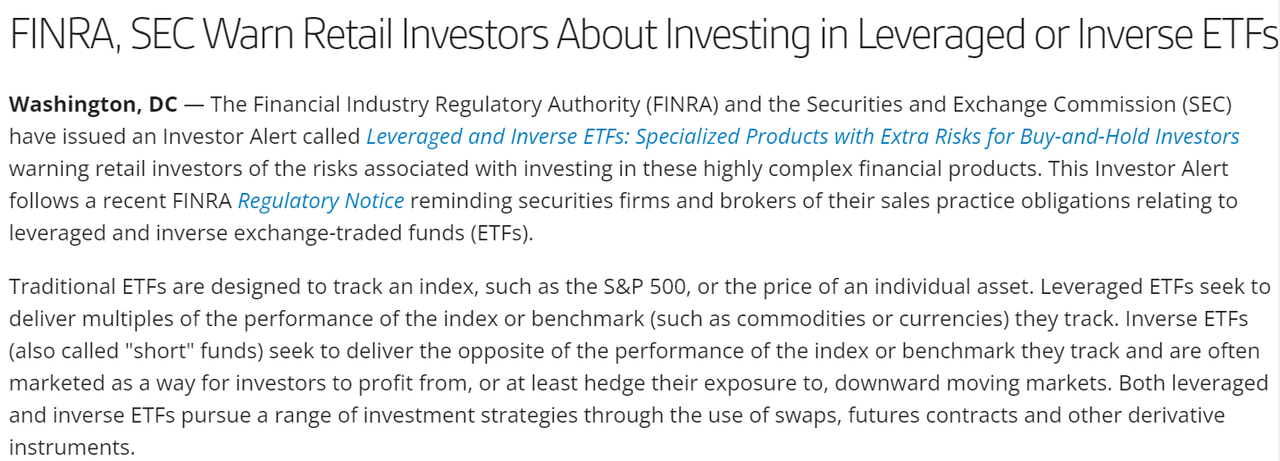
Don’t say you weren’t warned. If you do decide to take the plunge into the world of inverse ETFs or any kind of leveraged security, the best way to play it is to use technical indicators to time your entry and exit points. When stocks are hit hard — in this case, any one of the Mag 7 — and SPY shows a clear downtrend, it’s time to pull the trigger on a security like MAGQ. The good thing is that because of the overall market concentration of the Mag 7, these opportunities are easier to identify than if you had to track all 7 securities individually and calculate their combined price action to execute such a strategy.
Here’s one example of a good entry and exit point for MAGQ, and we’re going to use SPY as a proxy to track Mag 7 price action.
SA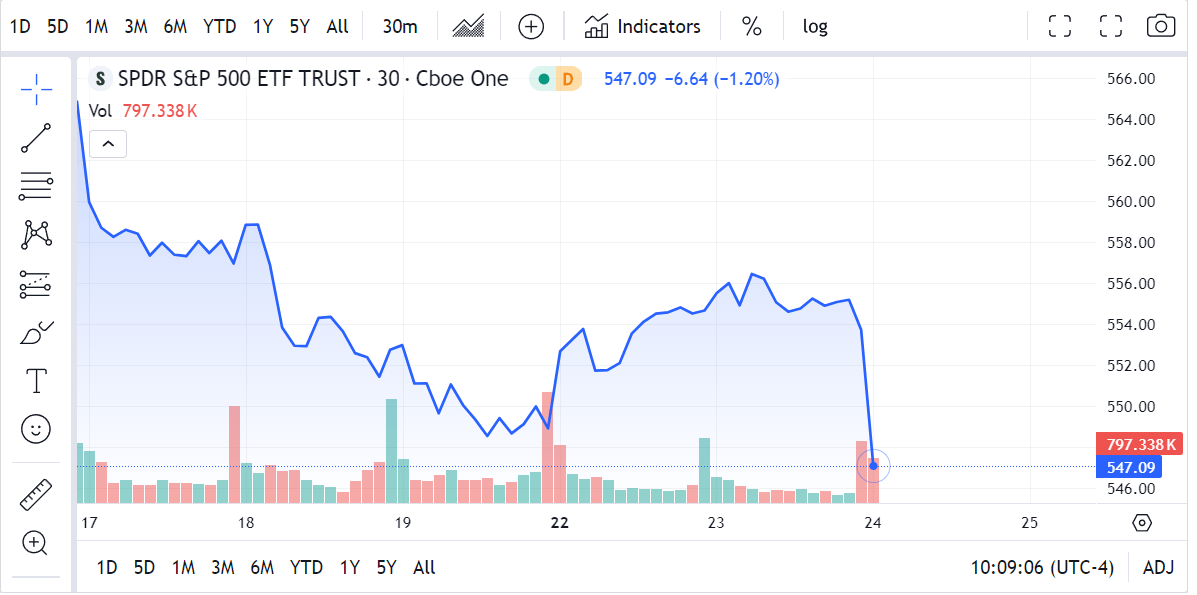
As you can see, SPY has been showing a clear downtrend over the past week. Interestingly, as I write this at 10:10 AM EST, SPY has dropped a hefty 1.3% between the last hour of yesterday’s trading and right now.
SA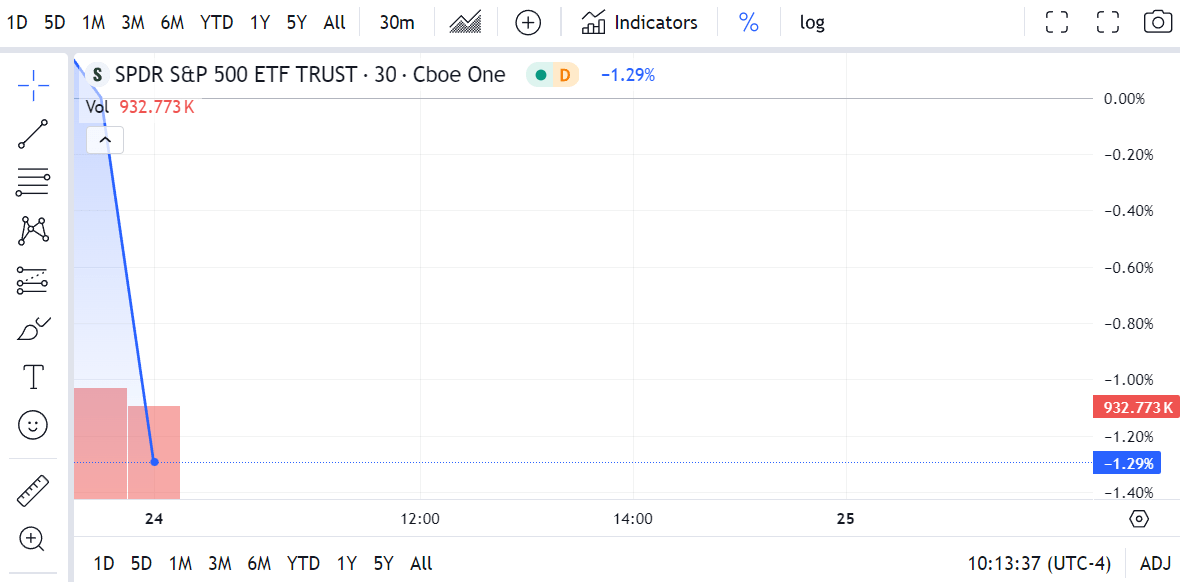
Now, this might prompt you to quickly jump in with an inverse ETF on Mag 7 and try to make a quick profit. However, that would be risky because a sudden reversal of volume could put paid to that. Rather, a better approach would be to apply at least a couple of technical indicators to that chart to see if there’s momentum behind that bearish movement. I tend to use the simplest ones — RSI 14 and OBV. Let’s add that context and see where we are regarding momentum.
SA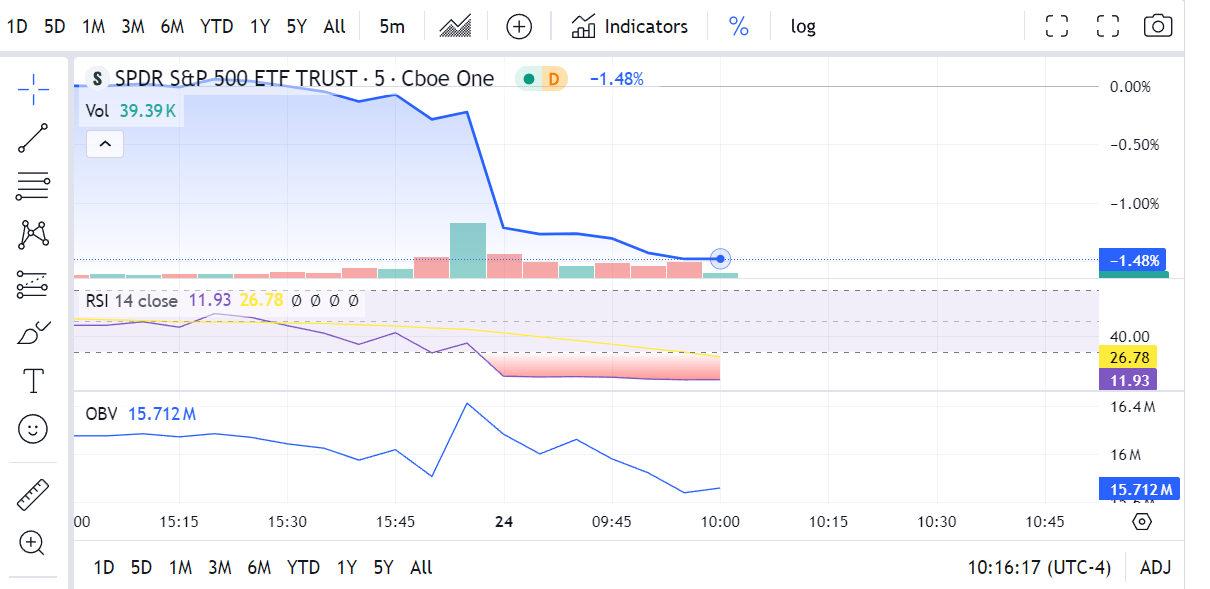
As you can see, OBV has been on the decline, indicating that sell volumes are currently stronger than buy volumes. That might prompt you to enter a trade with MAGQ, but if you look at the RSI indicator, you’ll see that the market is deep into oversold territory. That tells me that there’s an excellent chance that volumes will reverse. This is a situation where there’s no clear buy signal being generated by these indicators.
SA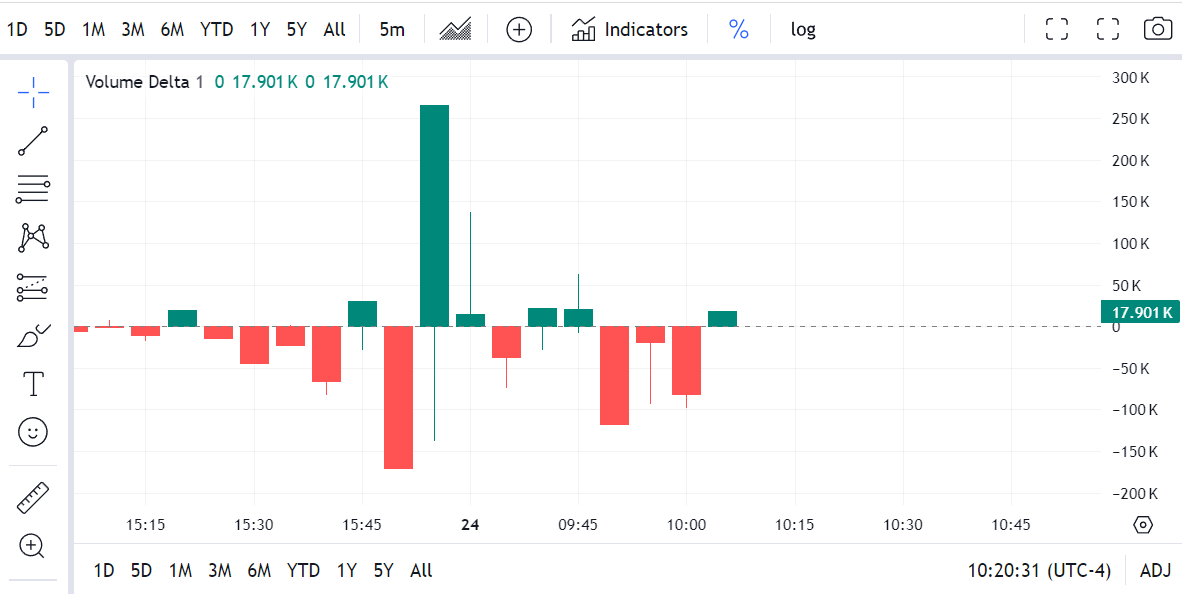
To further validate that assumption, you can use something like the Volume Delta indicator, which hints at some buying pressure over the past hour. Ideally, we’d need at least a full day when selling pressure is clearly overwhelming buying pressure, and that’s when a move should be made with an inverse ETF like MAGQ.
Let’s look backward and see if there were any such opportunities in the past two quarters.
SA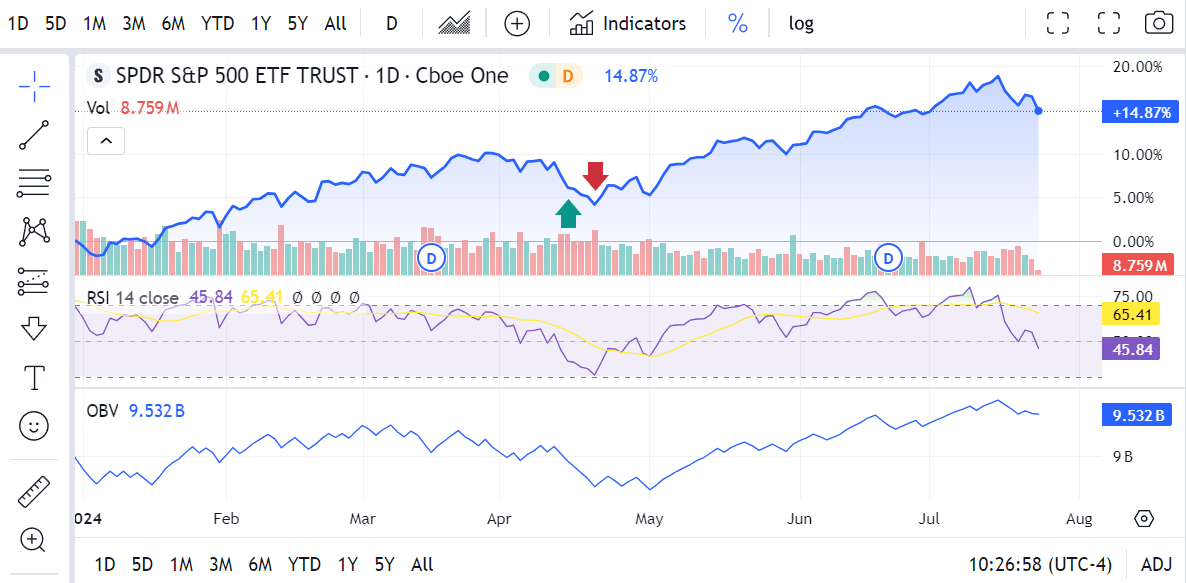
In the above example, I see at least one clear opportunity for a MAGQ play. The entry and exit points are marked by the green and red arrows, respectively. If you track that down to the indicators, you’ll first see that selling volume was high when the market opened on April 15, a Monday. At the time, the RSI showed that there was still room to run before the stock hit oversold levels. The OBV indicator showed a sharp decline in buying pressure, indicating that there was more gas in the tank for the bearish move. If you’d held MAGQ right through that week, you’d have offset any loss in your SPY holding — assuming you held the same number of MAGQ shares as you did SPY shares. And when you’d seen at the end of that week that RSI was dangerously close to oversold, that would have indicated an exit position.
Let’s validate that by looking at how MAGQ performed that week.
SA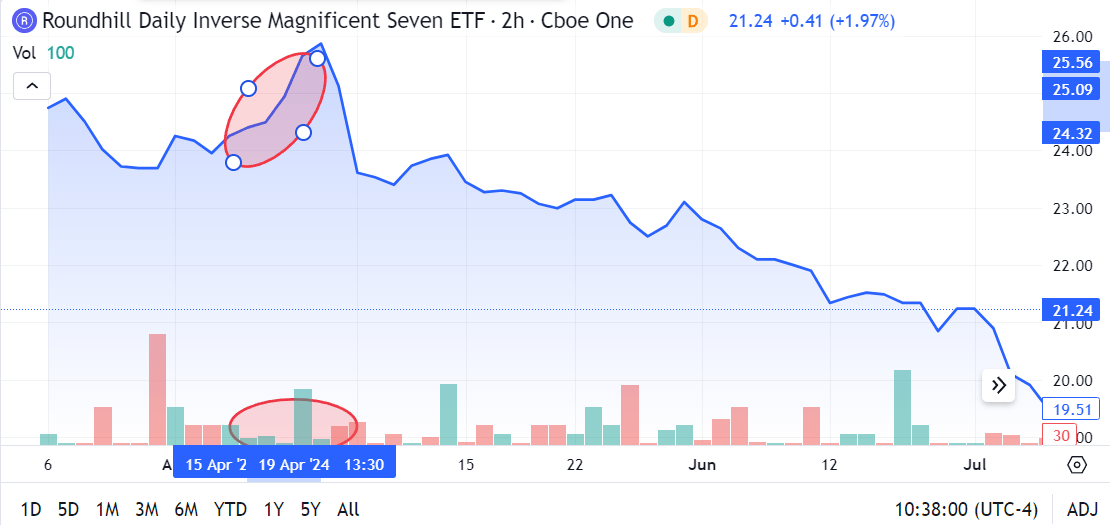
And there you have it — April 15 through April 19 was firmly validated as a good time for an inverse leveraged play. This strategy can essentially be used with any security that has some amount of stability. You don’t want your beta to be so high that your entry-exit opportunities are only intraday. At the very least, and this is if you’re okay to take on the higher risk but still want to play it relatively safe, you should wait a full trading day for those indicators to establish a clear buy signal.
One obvious risk here is one of share liquidity. Unfortunately, the fund has very low liquidity currently, and that’s understandable when you look at the AUM of just $613,000. Daily trading volume for the past three months was under 2,000 shares, with an average dollar volume of just $40,000. That means you can’t take a massive position; nor can you exit one quickly. Since the strategy is based on your ability to enter and exit quickly, MAGQ is not the right play if your portfolio is in the hundreds of thousands of dollars or in the millions of dollars.
That’s understandable, and it just strengthens my belief that investors are extremely wary of betting against the market right now. However, with valuations at the current levels and the potentially extreme political and economic environment that’s prevailing, I see heavy inflows into ETFs that bet against not only the market but also against individual securities. How do I know that? It’s because single-stock inverse ETF plays such as the T-Rex 2X Inverse Tesla Daily Target ETF (TSLZ) have AUMs nearing the $80 million mark, with ample liquidity. Funds tend to flow into inverse ETFs when the underlying equities show high volatility with frequent bearish signals.
SPY isn’t in that territory yet, and it’s not likely to show high volatility, but I believe it will, at some point in the next six months to a year, maybe even sooner, get there. Wait for that opportunity and play MAGQ cautiously, and you could potentially offset a significant portion of the losses on your long positions. I’m rating this a Hold, but my recommendation is to utilize this as a “buy and hold for a short period” tactic that’s signaled by clear technical indicators.
Read the full article here


